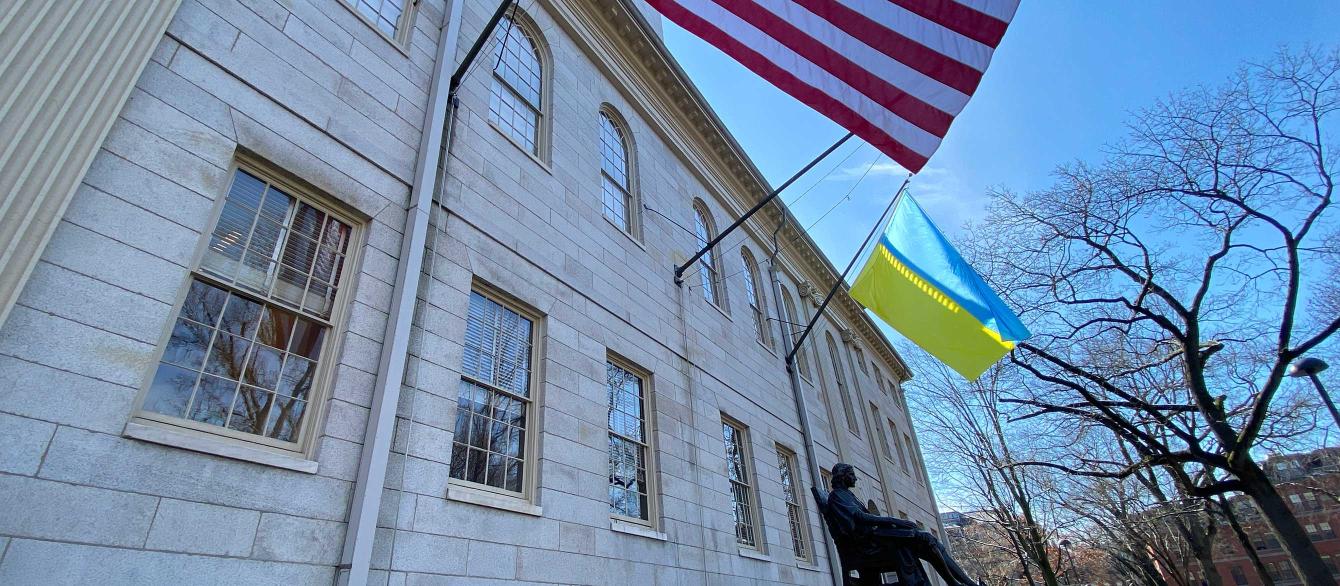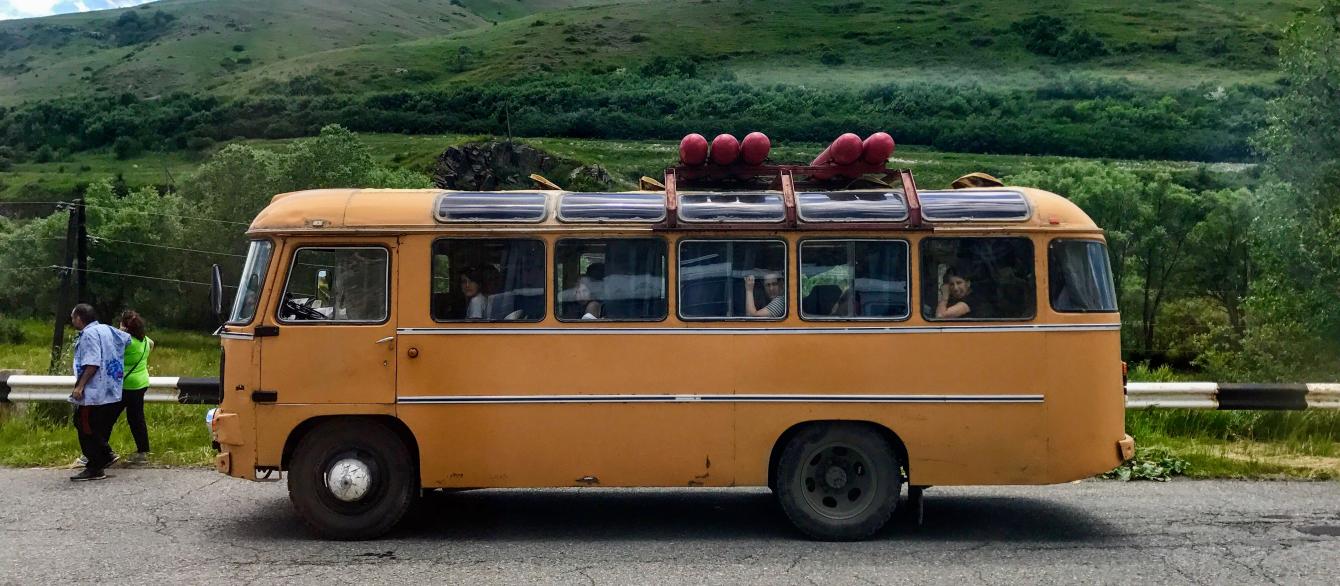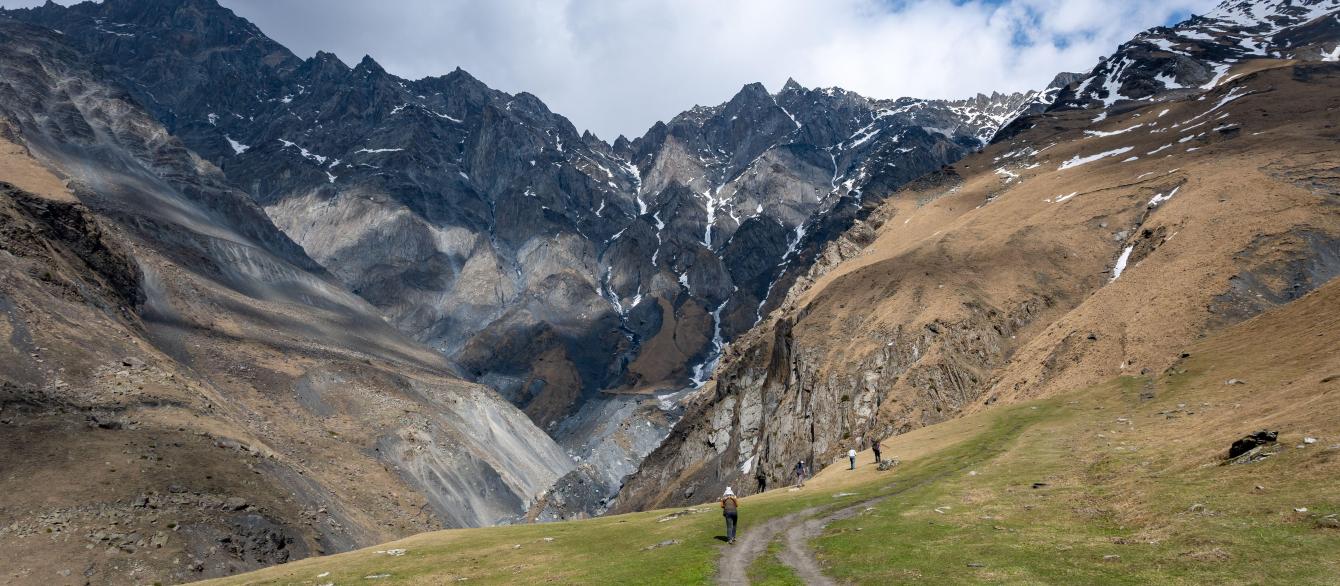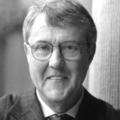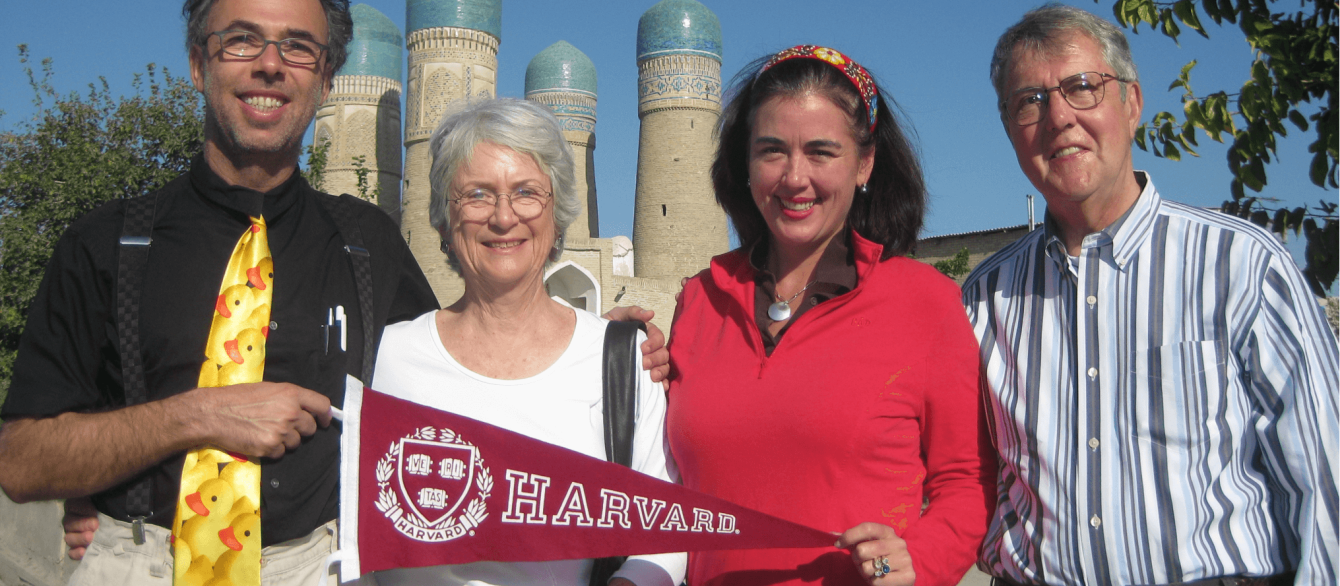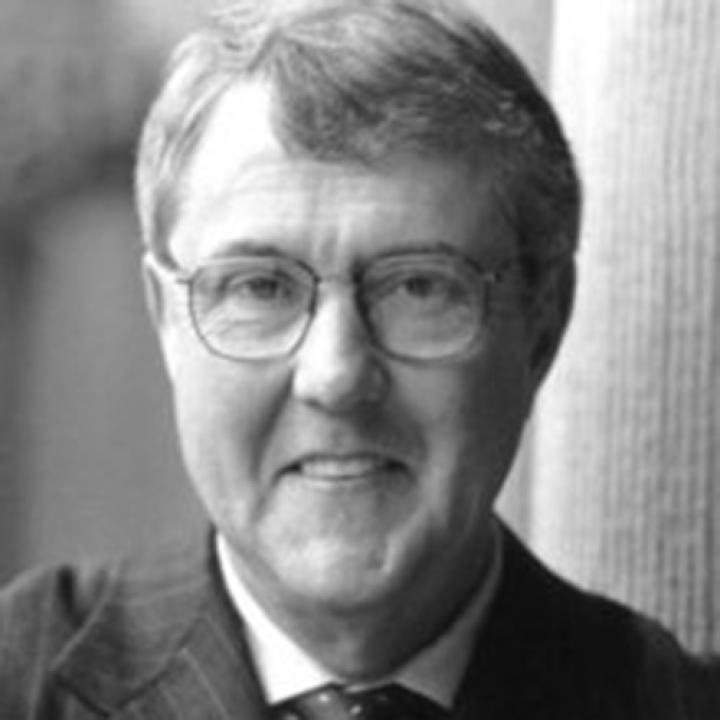This essay was originally published by Eurasianet.org as part of a series initiated and coordinated by Dr. Nagis Kassenova, director of our Program on Central Asia, in which retired U.S. diplomats share their experiences of working in the region during its early years of post-Soviet independence.
In “The Winter’s Tale,” Shakespeare famously situated a piece of the action on “the Coast of Bohemia,” which is a landlocked province in Central Europe, and scholars have argued about why ever since. When the Soviet Union disintegrated in December 1991, it left behind in Central Asia five new countries that were also without coasts on world oceans: Kazakhstan, Uzbekistan, Turkmenistan, Kyrgyzstan, and Tajikistan. The United States moved very quickly to establish diplomatic relations and set up embassies in each of their capitals, and to include them in the programs of assistance we were putting in place for all the post-Soviet states. Those first years of creating whole new relationships–something new under the sun–were in many ways just as magical as Shakespeare.
I was present at the creation, for between the spring of 1993 and the summer of 1995 I was Coordinator of U.S. Bilateral Assistance to the New Independent States (or NIS) of the former Soviet Union. Although the title sounds like a translation from the German, I worked out of the State Department in Washington, but I traveled frequently to the area, including each of the Central Asian “stans,” with senior U.S. officials or my own delegations.
I had been there once before, in December 1976, when I and my colleague Joe Presel from the U.S. Embassy in Moscow visited Uzbekistan and Tajikistan with our spouses. We had marveled not just at the splendid Islamic architecture but at vendors who threw down their rugs to pray in markets at midday; on the return flight we had enjoyed the company of other vendors loaded with melons to sell in Moscow (Soviet air fares made this profitable). Joe had served in Ankara, so when we inquired after a mosque and were told there was none, he switched to Turkish, and we were rapidly directed to one. Central Asia was thus a bit magical to me already; but that was nothing compared to what I found in the early 1990s.
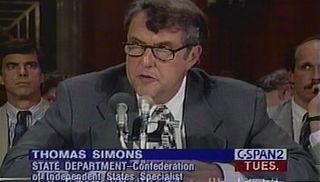
Testimony in Congress on the U.S. Foreign Aid Policy for the former Soviet Union, 7 September 1993.
The axis of the U.S. policy approach was to help our new area partners sustain their newly won independence and territorial integrity, but the truth was that we had little concrete assistance to offer: Tajikistan plunged almost immediately into a bloody civil war–as did Afghanistan, just across its southern border, and the others had varying saleable resources: abundant in Kazakhstan and Turkmenistan, moderate in Uzbekistan, scarce in Kyrgyzstan and Tajikistan–but all were under substantial state control.
That made it hard to program assistance that would encourage market and democratic development, as we wished, rather than just support sitting or squabbling elites. I was offered my first bribe in little Kyrgyzstan, but American companies were scrambling for local partnerships everywhere there were resources: with its massive oil and gas reserves, Kazakhstan was the great beneficiary. Our official assistance therefore focused on food aid: it actually kept little Kyrgyzstan alive in those years–its U.S. aid per capita was second only to Armenia’s–and it was appreciated everywhere.
What we could offer was association with the world’s remaining superpower, and that was appreciated too, if a bit warily.
What we could offer was association with the world’s remaining superpower, and that was appreciated too, if a bit warily. High-level visits in both directions were thus an important ingredient. An early high point for me came when the toilet in Kazakhstan’s Almaty guest house exploded on Secretary of State Warren Christopher, a fastidious man, but one who did not bear grudges. Another came listening to Kyrgyzstan President Askar Akayev quote The Federalist Papers to Christopher during his first visit to Washington, and watching Christopher’s blank face. Compact and fluent, Akayev was the only Central Asian leader who had not been a Communist Party boss in Soviet days, and he was genial at tapping into American idealism as an aspiring democrat.
Armenia was our favorite post-Soviet state because it and its American diaspora could find 99 U.S. Senators to vote for more aid; Akayev and his able Washington ambassador Roza Otunbayeva were almost Kyrgyzstan’s whole lobby. In December 1993 I accompanied Vice President Gore and Strobe Talbott, still President Clinton’s Ambassador-at-Large for the NIS, on their visit to the area in the wake of the shocking Russian election that saw ultra-nationalist Vladimir Zhirinovskiy take a quarter of the first-round parliamentary vote. We were scheduled to visit Almaty first, but bad weather made Gore switch our plane suddenly to Akayev’s capital Bishkek, and Akayev and his cabinet turned out in casual clothes and in a pouring rain to greet us in the middle of the night. It was also during my time as Coordinator that Akayev started to concentrate power, with a referendum extending his term that garnered votes in the high 90 percentages: Otunbayeva, a former Soviet diplomat, said her chums at the Russian Embassy had asked “Why go to the expense if you’re getting a result like that?” But Akayev’s end did not come until 2005 (after a visit to Harvard too); Roza was one of his successors.
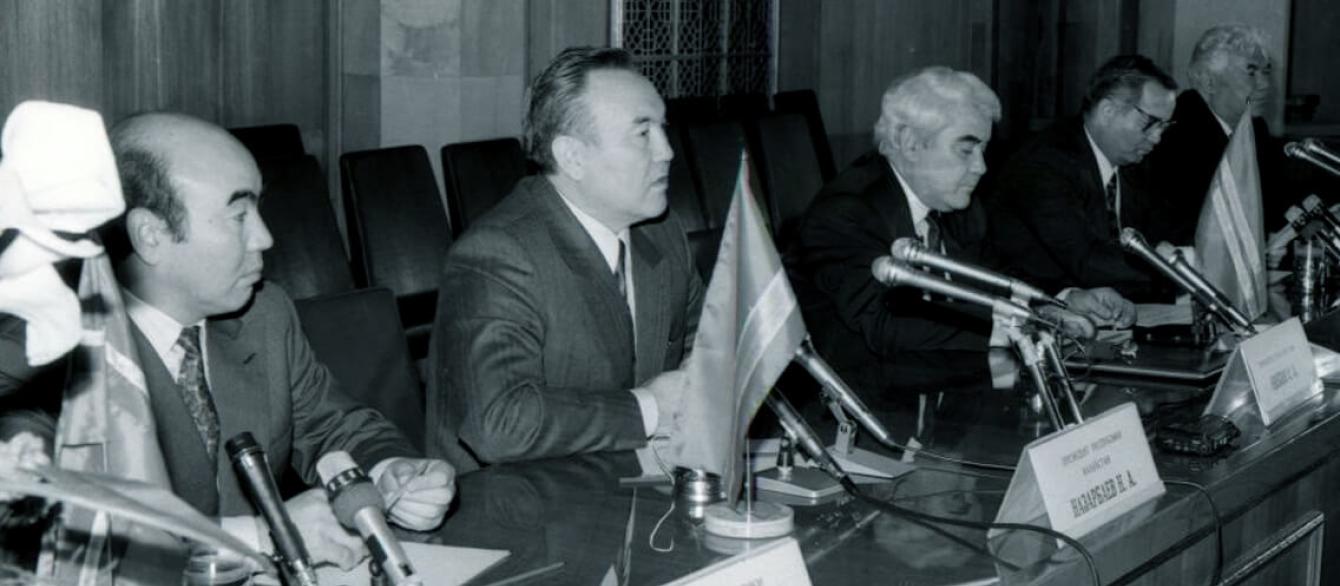
Leaders of Central Asian republics making a declaration of their readiness to become co-founders of the Commonwealth of Independent States, Ashgabat, 13 December 1991.
Accompanying our leaders put me in the room with Uzbekistan President Islam Karimov and Kazakhstan President Nursultan Nazarbayev, and I was in the American entourage when Nazarbayev visited Washington for the first time. But I also led small delegations of my own, which gave opportunities for closer looks.
Our new embassies were catch-as-catch-can affairs in those early days, and in both the Tajikistan capital of Dushanbe and the Turkmenistan capital of Ashgabat, both our offices and our sleeping quarters were housed on floors of the old Soviet foreigner’s hotel: you got to the office by going through someone else’s bedroom, and you all ate together. It was the Wild East in spades.
While our policy was to help our new partners sustain their new independence and territorial integrity, we were not anti-Russian. This was particularly clear in Dushanbe, in the throes of the Tajik civil war, because when we had evacuated our embassy the previous autumn, it had been escorted to the airport by the (Russian) 201st Motorized Rifle Division, which was still stationed in the country, and even after the embassy had returned its evacuation plan called the same solution. The Russian Embassy was in fact on the floor below ours in the hotel, and to get to ours I would walk through a metal detector manned by Russian Special Forces (Spetsnaz) personnel; one, who was learning English from a book, would greet me with a loud, cheerful “GOOD MOORNING!”
Our official dinner in Dushanbe was a treat too. We had met with Acting President Emomali Rakhmonov–this was years before he shortened it to Rahmon, as he now (still) is – but our dinner host was Abdumalik Abdulladjanov, then the Prime Minister. By his testimony Abdulladjanov was from a family of Muslim religious scholars who had spent the Soviet years in Mecca, but he also regaled us with tales of his tourist company, which specialized in “anything-goes” camping for German and Swiss men in Tajikistan’s high mountains. At the other end of the table, meanwhile, an American diplomat with excellent access was quietly describing the “slut wars” of the late Soviet period in the hotel: Slavic girls on one floor, Central Asian girls on another, and their pimps fighting it out for turf. Abdulladjanov ran against Rakhmonov for President in 1994 and lost; he is now in asylum in the U.S. Rahmoanov, now Rahmon, is still in charge.
In fairness, we gave Tajikistan a bit more than food aid: the wherewithal for the Aga Khan organization to rebuild an electricity generating plant in Tajikistan’s faraway eastern appendage of Mountain Badakhshan, which was inhabited mainly by the Aga Khan’s Ismaili Muslims. But the truth is we had little to offer Tajikistan as the Tajiks fought it out mainly on a regional basis–among themselves.
At the other end of the new Central Asia, the same was true with Turkmenistan. Here too, our embassy was all on a floor of the former foreigners’ hotel, but relations were less loose. Tajikistan was falling apart; Turkmenistan was the tightest little ship in the convoy. It held a big chunk of the world’s natural gas reserves, with all the outlets running through Russia at that point, and it was led by Saparmurat Niyazov, a former Soviet official who was developing an unsuspected talent for dictatorship. These were early days; there was still some flexibility in the machine. And I was there.
Here too we were not anti-Russian, although there were not enough of us in Turkmenistan to worry about evacuation help. The urbane Russian Ambassador was a Skobelev, the same name as the Russian conqueror of the Tekke Turkmen at Geok-Tepe in 1881, the conclusion of the Russian conquest of Central Asia. That Skobelev had also been charged with massacring civilians in the aftermath. I asked the ambassador if they were related; he said he was a direct descendant. I asked if that were a problem for him as ambassador. He replied with a smile that it was not, because Niyazov had let it be known that if anyone made his lineage a problem, there would also be a problem with Shikhmuradov’s. At the time Boris Shikhmuradov was a chief lieutenant of Niyazov’s, Deputy Chairman of the Council of Ministers with a big post in the Foreign Ministry; it was he with whom I had detailed talk about our aid (or its lack). However, said Skobelev, Shikhmuradov’s father or grandfather had been Lavrenty Beria’s Turkmen executioner in the Stalinist purges of the 1930s. Skobelev himself felt secure.

Ambassador Thomas W. Simons, Jr., and his wife, Peggy, dressed in Turkmen festive costumes, 2011.
Niyazov himself gave me a couple of hours alone with just an interpreter. Unprepossessing personally but lively and direct, he was interested in why there was so little American aid for the new Turkmenistan. I tried to explain it was because government control of the economy was so tight that we judged outside aid would be ineffective. Our small Peace Corps contingent of health care advisors was just setting up shop a few miles from Ashgabat’s center, I had met with them that morning, and I gave Niyazov some examples from their experience. To take a van from the center to their site, they needed the permission of the Mayor of Ashgabat: to which Niyazov exclaimed “I’ll fix it!” Or, to purchase a plastic bucket, they needed the permission of the Deputy Minister for Light Industry: again it was “I’ll fix it!” from Niyazov. In other words, his solution to our problem of delivering effective aid was to confirm the problem.
I once made a back-of-the-envelope calculation that over the decade of the 1990s the U.S., Russia and China each invested about $1 billion in the new Central Asia. It was not nothing–it allowed all three countries to count as players, rather than Russia alone, as in Soviet times–and it allowed the Central Asians to practice their ancient skills at balancing stronger outside powers against each other in their new independent circumstances.
My last visit to the area as aid coordinator came in 1995, when I was sent as Vice President Gore’s representative to a meeting of all five Central Asian presidents, at Nukus, the capital of Uzbekistan’s northern autonomous republic of Karakalpakstan. The agenda was what to do about one of Gore’s pet environmental scandals, the disappearing Aral Sea nearby; I brought a U.S. donation of $15 million. Had Gore come himself, Uzbekistan would have built five new villas for him and the other four leaders; as it was, they were to be housed in one.
I arrived early and spent the morning of their scheduled arrival in front of the government guest house, listening to mournful music from a Central Asian two-string violin, and watching the gardeners stick the last flowers into their new beds. The meeting itself was uneventful, though it was clear that the others considered Niyazov the runt of their litter; it may also have brought the Aral Sea problem forward a bit. Except for Akayev, they had all known each other for years, and it showed. To me it felt very much like I imagined a meeting of a city party committee (Gorkom) in Soviet times.
In May 1998 Joe Presel was U.S. Ambassador to Uzbekistan, and I was visiting on leave from my post as Ambassador to Pakistan when his embassy called my guest house in Bukhara’s old Jewish quarter to announce that India had exploded a nuclear device. I then made my way back to Islamabad to help try convince Pakistan not to follow suit, via three flights: from Tashkent to Sharjah in the Gulf, in a plane full of Slavic and Central Asian prostitutes and their pimps; then from Sharjah to Karachi, Pakistan’s business center, with businessmen; and finally from Karachi to Islamabad, with other bureaucrats like me. I arrived just in time to shave at the airport and join Deputy Secretary Strobe Talbott’s delegation in what proved a vain campaign to keep Pakistan’s nuclear weapon on the shelf.
Since my retirement from the Foreign Service later that summer, I have returned several times to Central Asia. In some ways it has become a different world after the 9/11 attacks and the U.S./NATO war in Afghanistan: it has raised outside engagement and the stakes for both Central Asian balancing and domestic political control to new levels. Ambassador George Krol will be a living witness to those changes. Looking backward, 2005 was something of a turning point, with the Tulip Revolution that expelled Askar Akayev from Kyrgyzstan and the Andijon Uprising next door in Uzbekistan, which led Islam Karimov to tighten the screws across the board. But much has remained familiar from the early years.
As in other things, Saparmurat Niyazov remained an extreme case. In 2002 a disheveled and probably drugged Shikhmuradov was shown on television confessing to having conspired to kill Niyazov, now officially known as Turkmenbashi, Father of the Turkmen, whose semi-religious musings were now required reading in Turkmenistan schools, and who was renaming the months of the year for relatives. Shikhmuradov then disappeared into jail with a life sentence; he has not been heard from since, even under Niyazov’s successor.
In October 2006 my wife and I stood with our alumni tour group at the base of a giant statue of Niyazov in central Ashgabat, sheathed in gold paint and turning constantly to face the sun as it moved across the sky. In the parliament square before us, battalions of office and factory workers were rehearsing the parade in which they would march before Turkmenbashi some days thence to celebrate Turkmenistan’s independence fifteen years before. As they wheeled and split and came back together on cues shouted through loudspeakers, veterans of many a Communist May Day and National Day parade like Peggy and me recognized the model immediately. And we could not help thinking how hard it was to change that model.
But of course there was change too. Niyazov died two months later, and after some years his successor moved the statue. With another alumni group in 2009 we crossed the Uzbekistan-Tajikistan border for a few hours’ visit to a Tajik historical site, through a spanking new Uzbekistan customs facility in an otherwise featureless landscape. It was surely a vigorous sign of nation-building at work; it even had a proud new computer. But the computer was down, so we filed by one-by-one as officials took down our data in pen and pencil, first going, then the same data again coming back. Among the signs of progress, therefore, was the heavy hand of the new state.
And I could not help remembering another border-crossing in the early 1990s. I took a plane from Dushanbe over the mountains to the northern Tajikistan city of Khojand, where I was met by a car from our Uzbekistan Embassy in Tashkent and driven there across empty country with nary a sign of border. Our Tashkent lunch was in a restaurant in a converted garage hanger run by Koreans, descendants of those Stalin had expelled from further east; it was a warm day, but while my driver and I were in shirtsleeves, the prosperous clients wore coats and furs. It was much like the late Soviet Union, in fact: no internal borders, and people with money, but little to buy. So there has been change, but change that goes many different ways, and not always for the better.

